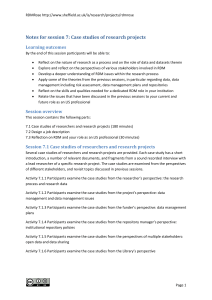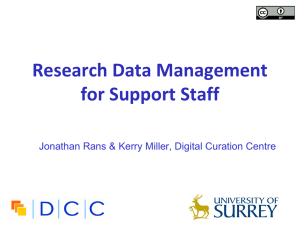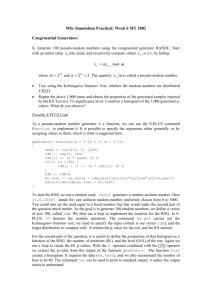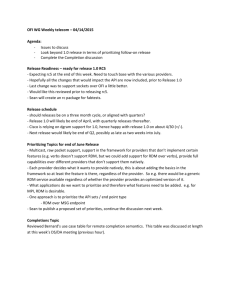No Arbitrage and Covered Interest Rate Parity
advertisement
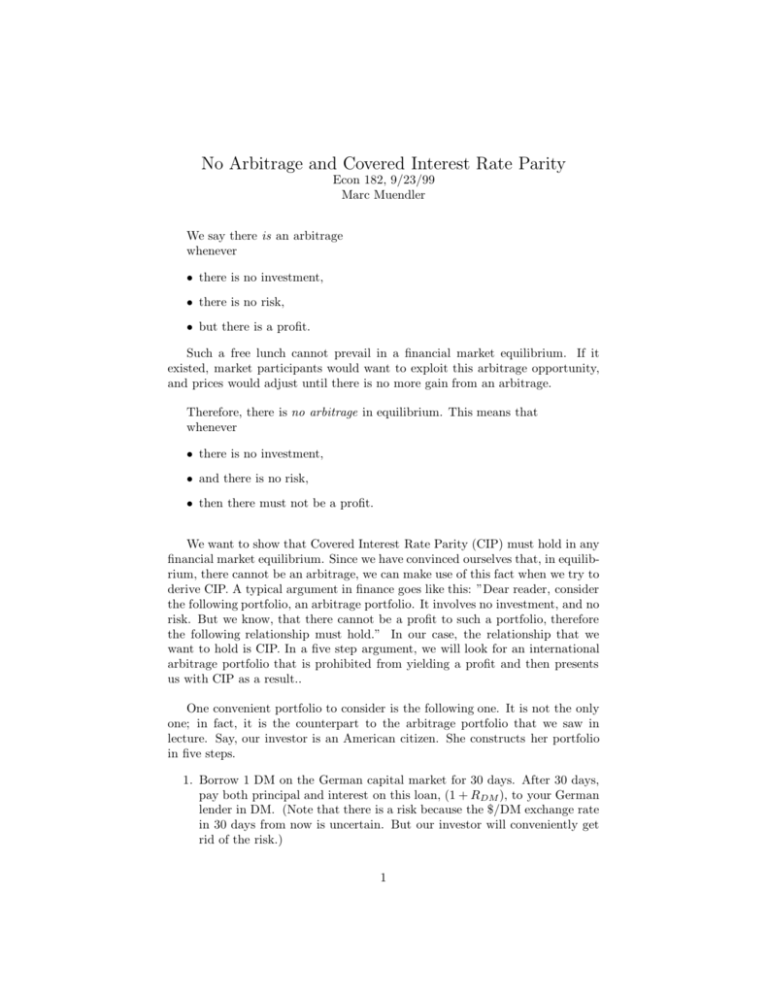
No Arbitrage and Covered Interest Rate Parity Econ 182, 9/23/99 Marc Muendler We say there is an arbitrage whenever • there is no investment, • there is no risk, • but there is a profit. Such a free lunch cannot prevail in a financial market equilibrium. If it existed, market participants would want to exploit this arbitrage opportunity, and prices would adjust until there is no more gain from an arbitrage. Therefore, there is no arbitrage in equilibrium. This means that whenever • there is no investment, • and there is no risk, • then there must not be a profit. We want to show that Covered Interest Rate Parity (CIP) must hold in any financial market equilibrium. Since we have convinced ourselves that, in equilibrium, there cannot be an arbitrage, we can make use of this fact when we try to derive CIP. A typical argument in finance goes like this: ”Dear reader, consider the following portfolio, an arbitrage portfolio. It involves no investment, and no risk. But we know, that there cannot be a profit to such a portfolio, therefore the following relationship must hold.” In our case, the relationship that we want to hold is CIP. In a five step argument, we will look for an international arbitrage portfolio that is prohibited from yielding a profit and then presents us with CIP as a result.. One convenient portfolio to consider is the following one. It is not the only one; in fact, it is the counterpart to the arbitrage portfolio that we saw in lecture. Say, our investor is an American citizen. She constructs her portfolio in five steps. 1. Borrow 1 DM on the German capital market for 30 days. After 30 days, pay both principal and interest on this loan, (1 + RDM ), to your German lender in DM. (Note that there is a risk because the $/DM exchange rate in 30 days from now is uncertain. But our investor will conveniently get rid of the risk.) 1 2. Enter a forward contract. In this contract specify with your partner that you want him to pay (1 + RDM ) DM to you in exaclty 30 days from now. Also specify that you will pay him exactly F · (1 + RDM ) dollars, no more and no less in 30 days from now. With the (1 + RDM ) DM that you will recveive from your forward contract partner, pay back the German lender in 30 days. (So, after entering this contract, our investor has gotten rid of all risk, the second dot in the no-arbitrage condition above is satisfied.) 3. Exchange the amount of DM that you obtained (in step 1) for E $ on the spot market. 4. Give a loan of E $ to an American for 30 days, which yields E · (1 + R$ ) in 30 days, including both principal and interest. (Since our investor has just borrowed the same amount from a German lender, she has not made any net investment. So, the first dot in the no-arbitrage above is now satisfied, too.) 5. Imagine the impossible for a moment. Imagine that the gain from this portfolio in 30 days, E · (1 + R$ ), exceeded our payments to the German lender in 30 days, F · (1 + RDM ). That would be an arbitrage for our American resident. Unfortunately, such an arbitrage cannot exist. (Similarly, imagine a German investor had followed the reversed steps with an American resident, borrowing 1 $, and so forth. Then he would get an arbitrage if F · (1 + RDM ) exceeded E · (1 + R$ ).) From this we can conclude that E · (1 + R$ ) = F · (1 + RDM ) must hold in equilibrium, which is CIP after some reformulations. These reformulations are E · (1 + R$ ) = F · (1 + RDM ), F · (1 + RDM ), E 1 + R$ = (1 + f) · (1 + RDM ) = 1 + RDM + f + f · RDM , (1 + R$ ) = for f ≡ F −E E = F E − 1, and finally R$ = RDM + f because f · RDM ≈ 0. Both f and RDM are small (percentage) numbers. Multiplying them makes the term negligibly small. 2
